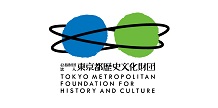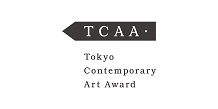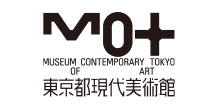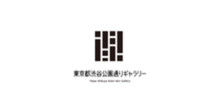Awai-Za "Mirages of Floating World"
- TOP >
- Archives >
- Exhibitions / Performances >
- Awai-Za "Mirages of Floating World"
Awai-Za "Mirages of Floating World"
TOKYO EXPERIMENTAL FESTIVAL Vol.9 ―Performance [Recommended Program]

Information
| Title | Awai-Za "Mirages of Floating World"
TOKYO EXPERIMENTAL FESTIVAL Vol.9 ―Performance [Recommended Program] |
|---|---|
| Date | 2014.11.4(Tue) - 2014.11.5(Wed) |
| Time | 19:00 |
| Admission | 3000yen |
| Organize | Tokyo Metropolitan Foundation for History and Culture, Tokyo Wonder Site |
| Venue | Ryogoku Monten Hall |
| Artist | KOKONTEI Shinsuke (guest) / Shungo Mise(Vn) / Seiko Takemoto(Vc) / Hidejiro Honjo(shamisen) / Yu Kuwabara(composer) |
Our main aim is to investigate a new engagement between Japanese text and contemporary music. In the first half of the concert, we will premiere the new pieces on the purpose to describe images of Edo represented in Kyoka Izumi's literatures. In the second half, we will perform the revised versions of works of hangonko, which is one of old stories in Rakugo, Japanese traditional verbal entertainment, with Rakugo story teller KOKONTEI Shinsuke, as the results of collaboration with him since 2011.
[new!!] Click here for Interview with Yu Kuwabara (composer)
Ticket Information
Date: November 4 (Tue), 5 (Wed)Finished
Start: 19:00 (Doors Open: 18:30)
*Duration 90 mins
Ticket: 3000 yen
Guest: KOKONTEI Shinsuke (Rakugo)
Additional ticket information
(at the door only)
Additional ticket will be sold on Nov. 5
Please visit reception desk and receive number card from 18:00. TWS let you enter the venue in numerical order from 18:55.
Booking
1. Booking should be made by E-mail or Fax.2. Please inform us of your name, phone number, date/time/name of the performance and number of tickets with a subject of "Booking for TEF Performance".
3. Payment should be made at the venue on the day of performance.
4. Booking will be closed by 17:00 of the day before each performance, or as soon as the seats are fully booked. For the latest ticket information, please check this page.
*Please note that program content may change due to inevitable reasons.
Profile
Awai-Za
The creator collective Awai-Za, consists of Shungo Mise (violin), Izumi Fujii (cello), Seiko Takemoto (cello), Hidejiro Honjo (shamisen), and Yu Kuwabara (composer), was founded in 2010 in the aim of investigating
a new musical engagement between traditional Edo culture and European contemporary music. The collective made their debut featuring Rakugo performer KOKONTEI Shinsuke in 2011, and since then, they keep on collaborating with him in the project of Shinkei Kasanegafuchi.
Interview
Yu Kuwabara (from Awai-Za)
Composer, participated in TWS Local Creator Residence Program in 2009. She formed the creator collective, Awai-za with other young musicians she met at International Ensemble Modern &Tokyo Wonder Site Academy in2010.
--Four years ago, when you formed Awai-Za with other musicians around your age, why did you choose "Edo" as your theme?
 Since I'm the only creator (composer) in Awai-Za, our policy is basically to do things that I'm interested in. Normally I create works based on the theme of the relationship between words and sound, especially between the Japanese language and sound, so we worked out the ideas from that point. Japan started the process of westernization in the Meiji Era, but I think the Edo Era, which immediately preceded it, was the period when Japanese culture was the richest--when all the characteristically Japanese things that had developed up to that point were present. The Edo Era seems more familiar to us than earlier periods, and at the same time we feel there are a lot of mysterious aspects to it, so I thought I'd like to investigate that. Also, Ayusawa-kun [shamisen player, Hidejiro Honjoh] is very important to our group. When we thought about his shamisen playing, we ultimately decided that it would be good to delve into the Edo Era. Our key word is to "sublimate," rather than simply reproduce things from the past just as they were.
Since I'm the only creator (composer) in Awai-Za, our policy is basically to do things that I'm interested in. Normally I create works based on the theme of the relationship between words and sound, especially between the Japanese language and sound, so we worked out the ideas from that point. Japan started the process of westernization in the Meiji Era, but I think the Edo Era, which immediately preceded it, was the period when Japanese culture was the richest--when all the characteristically Japanese things that had developed up to that point were present. The Edo Era seems more familiar to us than earlier periods, and at the same time we feel there are a lot of mysterious aspects to it, so I thought I'd like to investigate that. Also, Ayusawa-kun [shamisen player, Hidejiro Honjoh] is very important to our group. When we thought about his shamisen playing, we ultimately decided that it would be good to delve into the Edo Era. Our key word is to "sublimate," rather than simply reproduce things from the past just as they were.
--You have collaborated numerous times with the rakugo storyteller Kokontei Shinsuke. What have you gained from that experience?
After working with him a number of times, I have the feeling that the intervals, the way of using words and so on have physically become a part of me. Working with him also brought home the fact that Japanese and Western ways of thinking about sound are completely different. I think that in the west, the thinking is that one has something completely formed and disseminates it to people; whereas in Japan, it seems as if individual elements come together to make something new and unexpected, and instead of being "created," the whole thing "becomes." I really understood this when I started to work with him.
--This time, new versions of two works performed in Awai-Za's first concert will be premiered. What will be different from the previous time?
 My own way of composing has changed quite a bit in the past three years. Some aspects were indigestible before, so I've re-examined them. I think the works will turn out to be completely different this time. In the case of "Hangonko," I had wanted to create the piece so that sound and words were equal, treating the rakugo storyteller (words) as one member of the ensemble. However, based on the studying I've done since then, I've realized that I need to reconsider some things--it seems to me that some parts could be bolder and other parts were forced. So I'm going to improve those parts.
My own way of composing has changed quite a bit in the past three years. Some aspects were indigestible before, so I've re-examined them. I think the works will turn out to be completely different this time. In the case of "Hangonko," I had wanted to create the piece so that sound and words were equal, treating the rakugo storyteller (words) as one member of the ensemble. However, based on the studying I've done since then, I've realized that I need to reconsider some things--it seems to me that some parts could be bolder and other parts were forced. So I'm going to improve those parts.
--Is there anything you would like to tell people who come to see the performance?
Mainly I would like them to listen with open ears. I think people usually listen without focusing; they aren't really "listening" to the sounds at all. I hope they will try to get to the essence of "hearing (listening)" and be open to hearing how many small sounds there are in a single sound. And I want to make music that can encourage that kind of listening. I also hope people who are interested in words will come to the performance.
Back to TEF Performance Vol.9 Top Page







